Astronomical events of October 2023
The month of October is usually a suitable month for celestial observations and the night skies present a good number of interesting objects that are worth observing. However, not only will we have nighttime events this month, we will be lucky to be able to observe a solar eclipse! In addition, we will witness several close-ups between objects in the solar system. As a challenge of the month, we propose the unique Andromeda Galaxy and the Perseus Double Cluster, as well as a spectacular meteor shower, and to finish, our already monthly anniversaries of the Moon.
Quite an event: the annular solar eclipse on October 14
An annular solar eclipse occurs when the Moon is near apogee, that is, when the Moon is at the point in its orbit at which there is the greatest distance from the Earth and, therefore, its angular size. apparent is less than that of the Sun, so when it comes between our planet and our star, the lunar disk does not completely cover the solar disk, revealing a luminous ring around it, which many call the “ring of fire.”
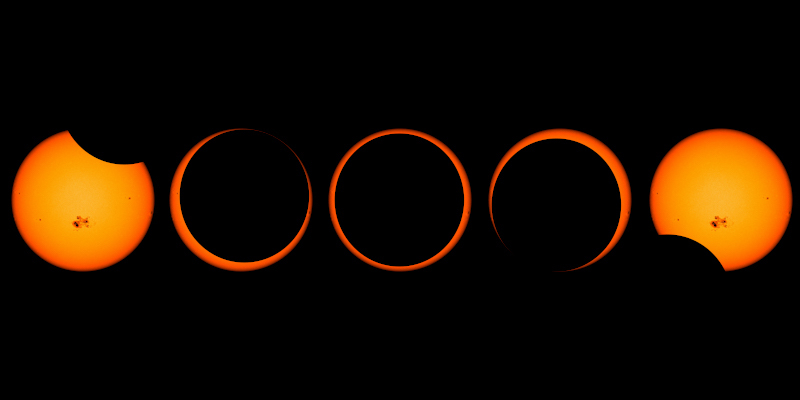
On October 14, an annular solar eclipse will be visible in some areas of the Yucatan Peninsula, however, throughout the territory it will be visible as a partial eclipse. We place the local schedules for three locations in the Mexican territory.

Don't forget that you should never look at the Sun directly. To observe the eclipse safely, you can search on the page of the National Eclipse Committee of Mexico (eclipsesmexico.mx) for some methods that allow you to observe without damaging your eyesight.
Of the moons, the October one is the most beautiful
If you are a good observer of the night skies, you will have noticed that every day the Moon rises an hour later and that, when it is in its new phase, we cannot see it. In the growing phase, we will observe it, like “the cat's smile”, in the afternoon and first part of the night. In its full phase we will see it emerge at the beginning of the night and remain until dawn, towards the eastern horizon. And in the waning phase, it will illuminate the sky from after midnight until noon.
This allows us to distinguish that the Moon moves differently from the background stars, completing its cycle in almost a month, during which the Moon will “visit” various celestial objects, in various constellations. During this month the Moon will visit the planet Jupiter twice, once on October 1, when it will pass just 3° 23' north and another on the 29th, when it will be 3° 08' north of the gas giant. Both conjunctions will happen in direction of the constellation Aries.
On October 2, the Moon will make an approach to the open cluster M45, the famous Pleiades, passing at just 0° 59', this in the direction of the constellation of Taurus.
Finally, in the early morning of October 10, we will have the conjunction of the Moon and Venus. The Moon will be 6° 29' north of Venus, in the direction of the constellation Leo.
To track these events, no type of instrument is necessary, just clear skies.
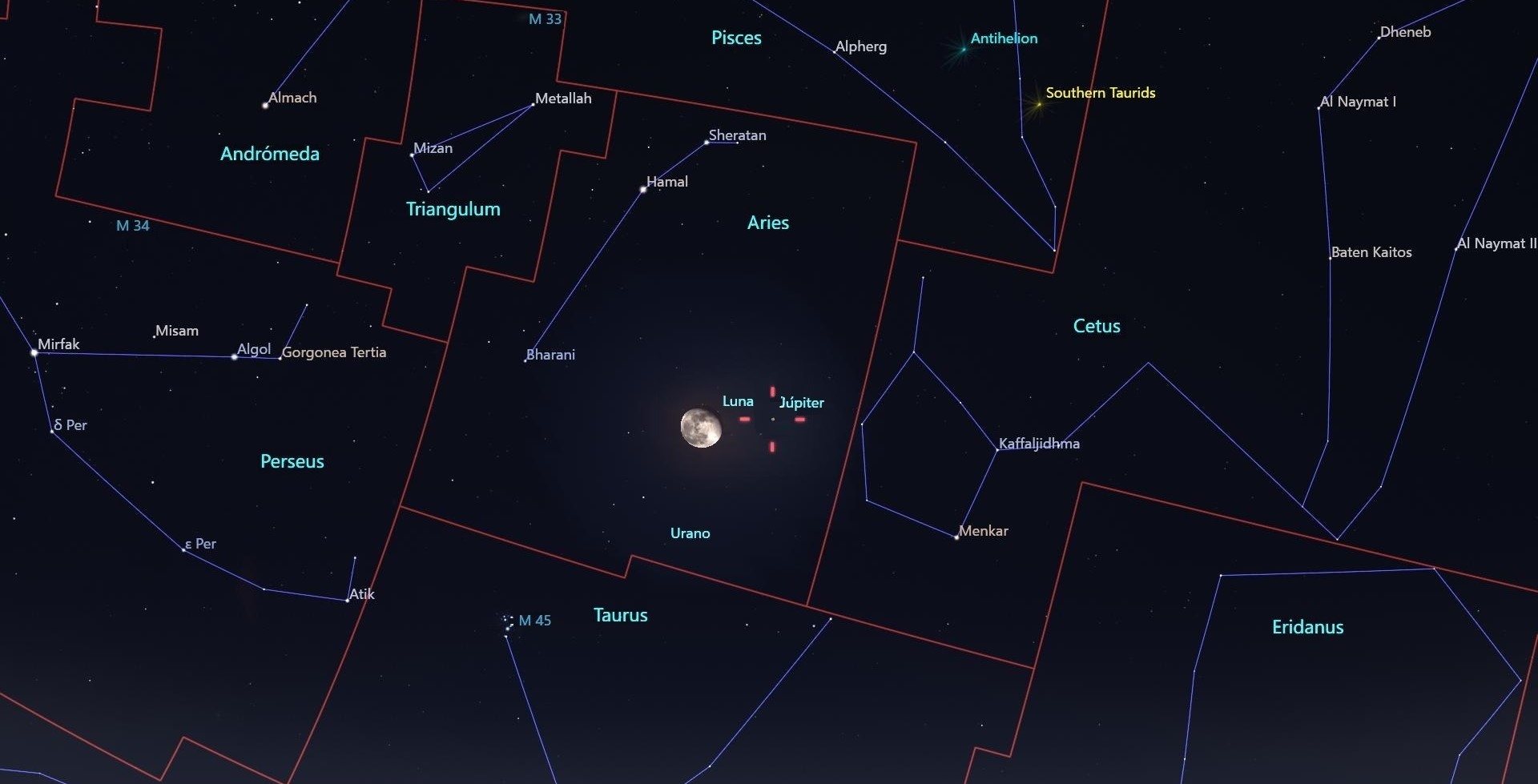
One of the extragalactic objects visible to the naked eye
Just over 2.5 million light years away, that is, at a distance that we would travel in 2.5 million years, traveling at the speed of light, approximately 300 thousand kilometers per second, is the Andromeda galaxy, a spiral galaxy. whose shape is very similar to our own galaxy. It contains a mass of one million million solar masses, arranged in star systems, dust and gas, which interact gravitationally. The Andromeda Nebula has been recognized since ancient times, but the first official record was given by the Persian astronomer Al-Sufi in the year 961, who described it as “a small cloudiness in the constellation of Andromeda.” It was included in Messier's catalog with number 31 (M31), in 1774. The Andromeda galaxy shines during autumn and winter times for the northern hemisphere, being a good time to appreciate this unparalleled wonder of the universe.
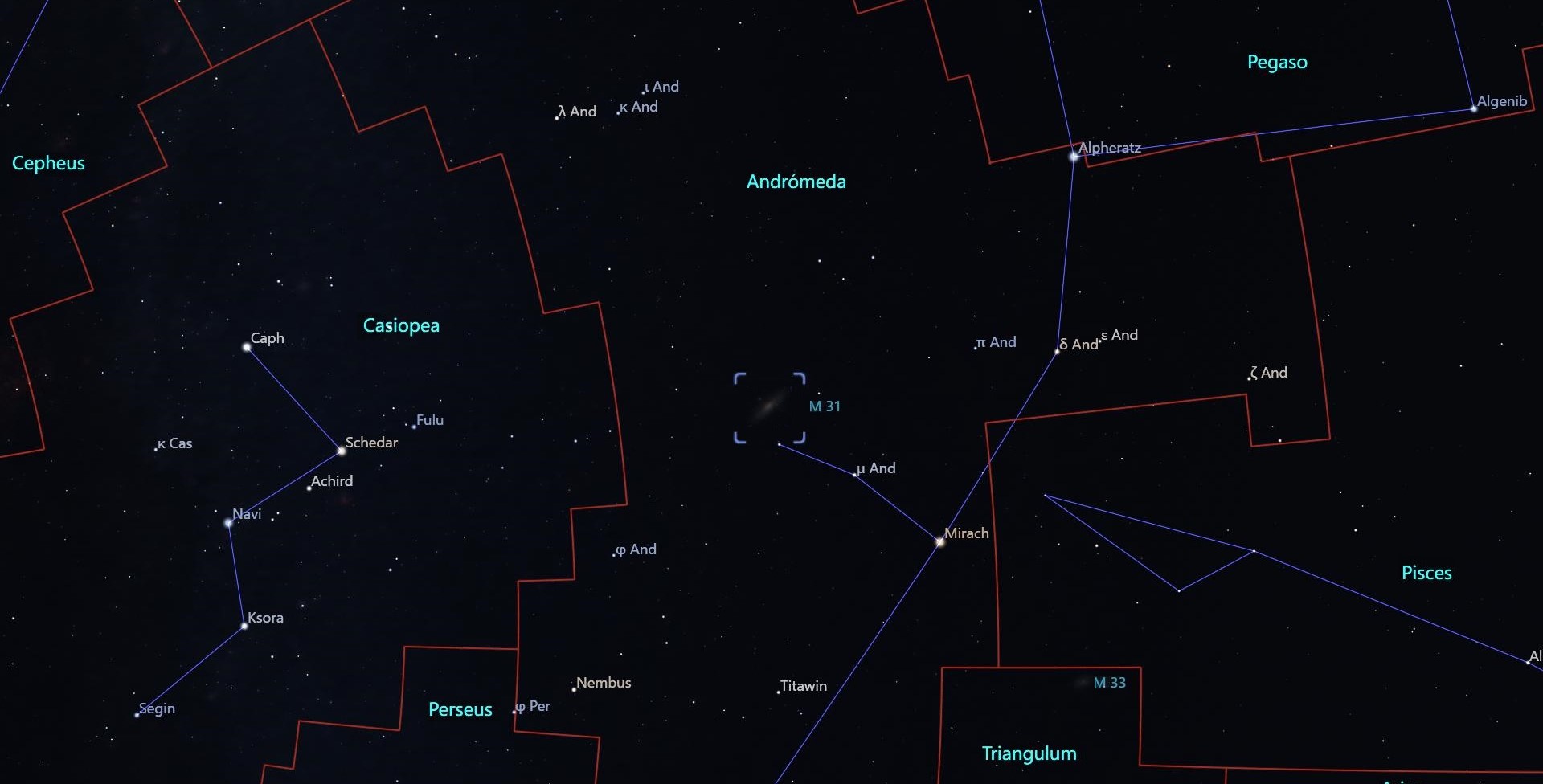
Two for one: the Perseus Double Cluster
It is well known that, generally, stars are not born in isolation, and that it is not uncommon to find multiple systems of stars, even galaxies; What is less frequent is finding open clusters associated in clusters. Fortunately, nature is unpredictable and has given us one of these associations: the Perseus Double Cluster, which contains the open clusters NGC 869 and NGC 884, true celestial pictures that adorn the autumn sky, located, of course, in the direction of the constellation of Perseus, the demi-god who saved Princess Andromeda from the sea monster, according to Greek mythology. With a little patience, some binoculars or a small telescope we can search and find these celestial treasures, towards the northeastern part of the celestial sphere.
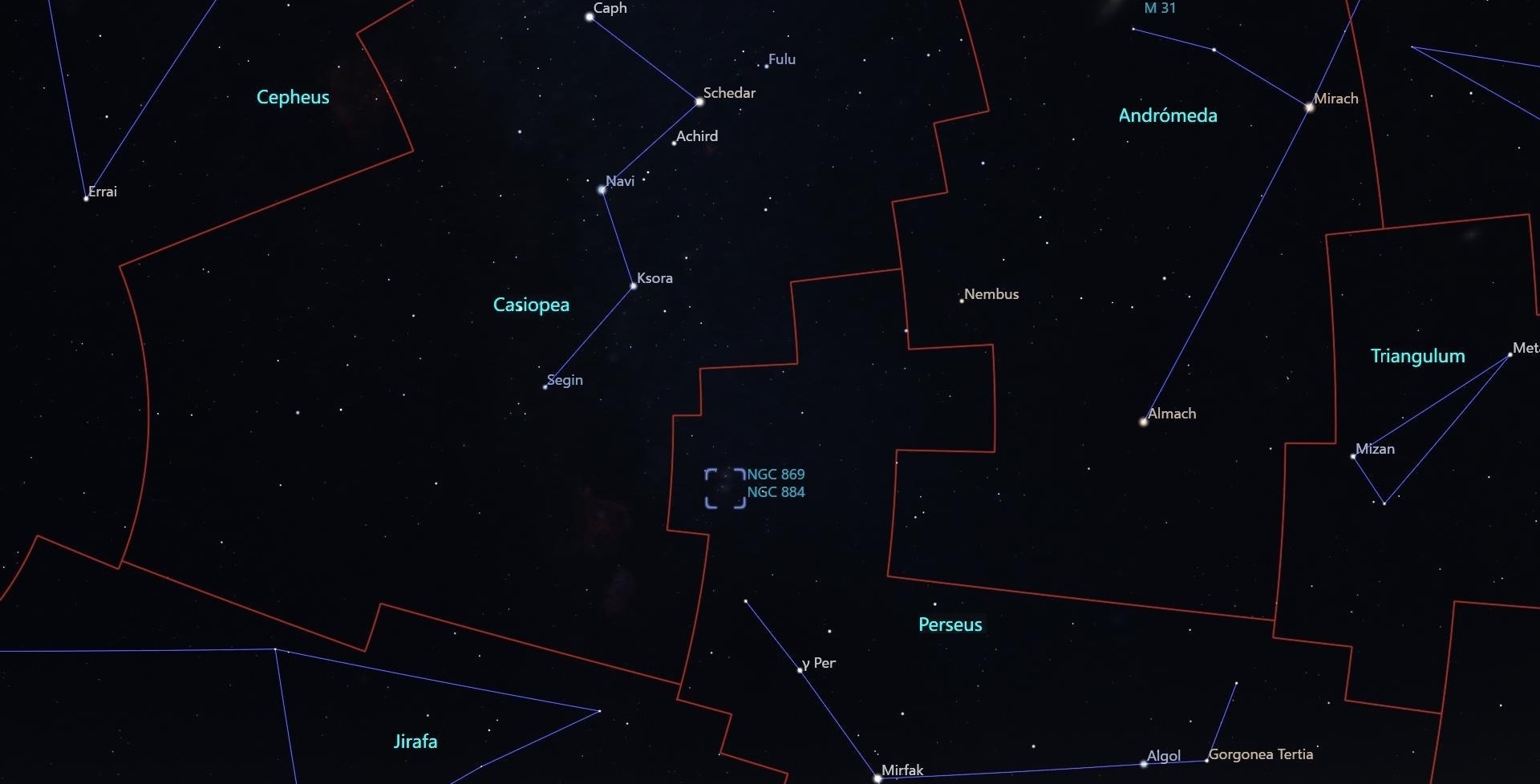
October weather is usually favorable
In the month of October, the weather improves and this helps us have clean and clear skies for good astronomical observation. Around October 22, an emblematic meteor shower occurs, the so-called Orionids, whose radiant is located in the direction of the constellation of Orion. The Orionids will be active between October 2 and November 7, with their maximum on October 22, precisely. A maximum observable rate of 15 meteors per hour is estimated. It has been concluded that the debris left by comet 1P/Halley induces this rain, with the best time to observe this event being from the evening of October 21 to the early morning of the 22nd, and the best of all is that We only need to lie face up in the open sky to observe this rain and be well protected. The rest, good music, a hot drink, company, depends on each person. The Moon, which will be in the first quarter, will possibly cause a decrease in fleeting observables.
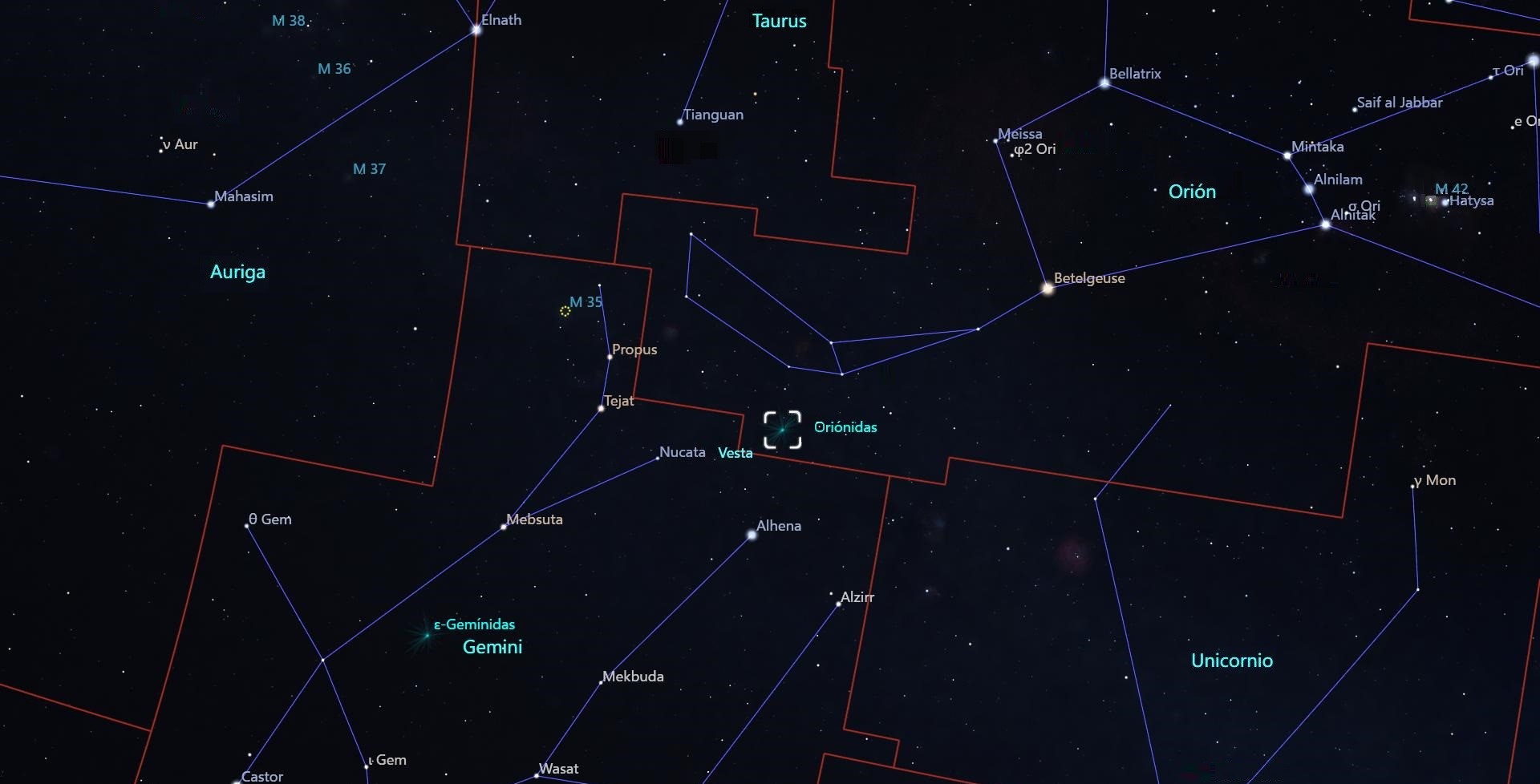
Phases of the Moon
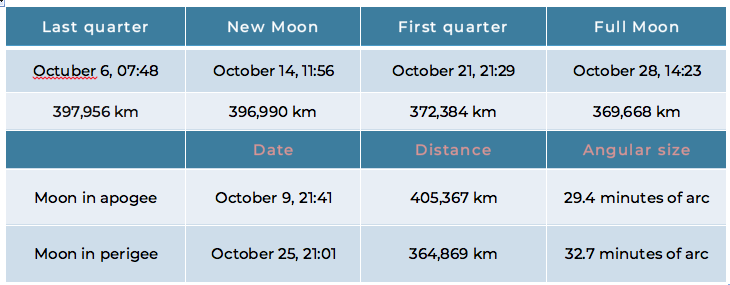
El video con los eventos astronómicos del mes de octubre de 2023 se puede consultar en la siguiente liga: https://youtu.be/kDtjwfg0IQg?si=MfrudTsxf9DMvA2o
Contacts:
Dr. Agustín Márquez Limón (amarquez@inaoep.mx), Coordinación de Astrofísica-INAOE
M. C. Tania Martínez (astronomiaplanetariokayok@gmail.com), Red de Planetarios del Estado de Quintana Roo
Dr. Raúl Mújica García, (rmujica@inaoep.mx), Coordinación de Astrofísica-INAOE y Noche de las Estrellas
Luis Enrique Erro # 1, Tonantzintla, Puebla, México, Código Postal 72840, Tel: (222) 266.31.00, difusion@inaoep.mx
This work is licensed under a Creative Commons Attribution-NonCommercial-NoDerivs 2.5 Mexico License.


